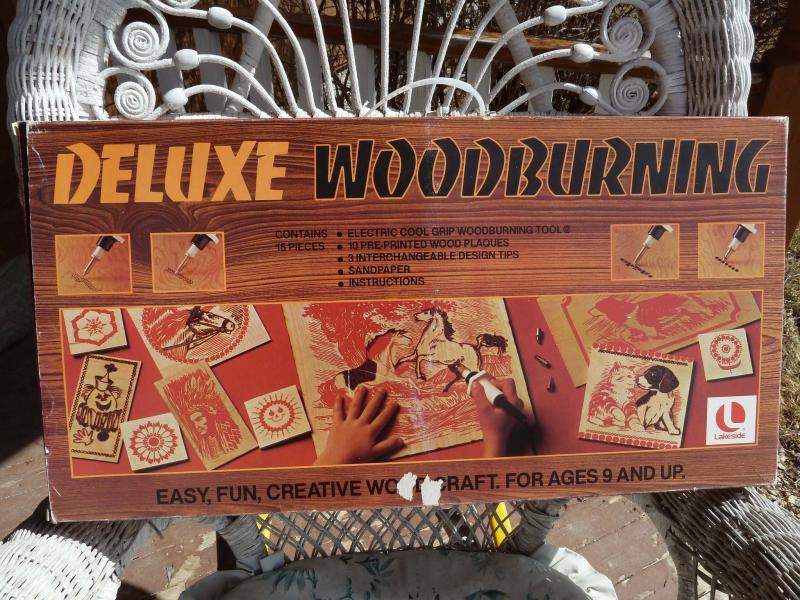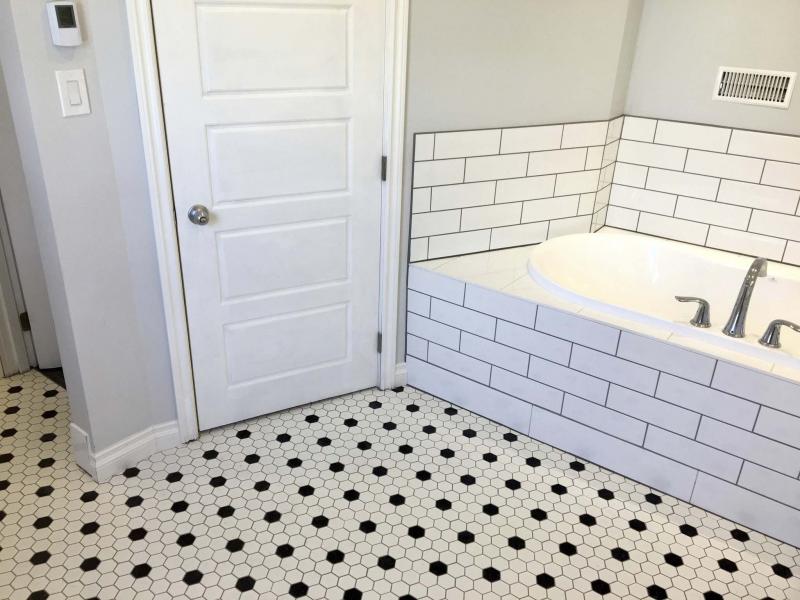Renovation & Design
Renovation & Design
It's important to stay on top of deck maintenance
An outdoor deck provides great comfort and luxury for spring and summer outdoor entertaining. But, even the most well-constructed deck needs to be well-maintained and inspected every so often. Wood decks require the most maintenance, but even composite decks need to be checked. Follow these steps to ensure a safe deck season for your family.
Inspect your deck
At least once a year, conduct your own inspection of the deck to identify problems and prepare for the season.
Sweep it clear of debris, furniture, toys and so on. You want a clean surface to check out, and sometimes furniture can get in the way of what you need to see.
Debris and leaves that remain in the same spot for a long time can contribute to mould.
Carefully check all the nails, screws and other fasteners. Any fastener that is loose, corroded or rusted needs to be tightened or replaced.
Check all railings, banisters and stairs for stability and tripping hazards. If a rail or banister can move when you push against it, or a stair has loose boards, hire a professional to repair it.
Inspect all the boards for weakness or decay. In particular, look for small holes in wood boards — they can indicate insect infestation. If you can push a screwdriver into the wood, it’s too weak and should be replaced.
Deck cleaning and sealing
Wood decks can last for decades, but they need to be regularly cleaned and sealed to stay in top condition. Wear and tear, rain and sun take their toll. A dirty deck poses many problems. Not only can it make the deck less attractive, the slippery surface creates a safety risk.
Mould and mildew will cause long-term damage if not removed.
If you’re not sure if your deck needs to be resealed, sprinkle some water on the surface. If the water beads up, your sealant is still effective. If it seeps into the wood, you need to reseal the deck.
Every few years, hire a professional to perform a cleaning and sealing process. The money you pay will be well worth it for the extended lifespan of your deck.
A professional should use the correct power washing settings to avoid splintering the wood.
Also make sure that they use cleaning chemicals that are recommended by the manufacturer for your particular type of wood.
Even if you don’t get it resealed, a deck can use a good cleaning at least once per year.
For smaller decks, you can do the work with a long-handled scrub brush. A larger deck will require a pressure-washing job.
When you’re cleaning and sealing your deck, also consider re-staining it. Wood stain loses colour over time as it accumulates damage and debris.
Removing the grime will restore some of the colour, but after a few years, a new coat of stain will brighten it up.
— TNS
Renovation & Design
White vinegar and water best for blinds
QUESTION: I love green pea soup. I haven’t been able to find it in stores for a few years now, so I suspect manufacturers have stopped making it. I have tried various recipes that I have found, but none of them have the same taste as the canned green pea soup. Do you have a recipe for green pea soup that tastes just like the canned soup used to taste?
Thank you,
— Robert
Answer: If anyone reading this column has a favourite pea-soup recipe, please email it to me and I will pass it on. To be honest, I have never eaten pea soup, so I don’t have a spectacular recipe to share.
Question: I am in the process of spring cleaning and wonder if you have an easy solution for cleaning plastic blinds. I am too old to remove them from the brackets, is there an easier way?
— Laura
Answer: Yes, absolutely. Combine equal parts white vinegar and water into a bucket.
Place an old, clean sock onto your hand. Dip the sock into the solution and run your hand over each slat to remove dirt, dust and grime.
After the blinds are dry, wipe each slat with a fabric softener sheet to repel dust.
Outstanding Tips!
Keep a bag of lemons in the freezer — grating zest is much easier off a frozen lemon than a fresh one!
— Noreen
When purchasing a used camper trailer, be sure to slide yourself underneath and take a look at the wood on the bottom to ensure there are no holes. Sometimes camper floors rot and owners cover the rot with vinyl flooring on the inside of the camper.
— Darren
Note: Every user assumes all risks of injury or damage resulting from the implementation of any suggestions in this column. Test all products on an inconspicuous area first.
Reena Nerbas is a popular motivational presenter for large and small groups; check out her website: reena.ca. Ask a question or share a tip at reena.ca
Renovation & Design
Cold-air ventilation will fix moisture problem in camp's crawl space
Question: My camp is up in Sudbury, Ont., and I have a problem with moisture in the crawl space. It is mostly enclosed, due to the previous owners living up there full time, so they required this for the plumbing.
The ground is made up of dirt and rock under the building. The moisture issue has been there since purchasing. I asked a friend, who is an architect, to have a look and he recommended putting up eavestroughs, as there were none. I also raised the soil around the crawl space walls, so that it is angled away from the camp.
I also added about four vents to the crawl space this past summer and found that there is still plenty of moisture, to the point where little droplets of water are actually forming on the wood above. The wood itself has some white mould on it, too. I do not see any vapour barrier, unless it is under the hardwood flooring inside the camp.
Would you suggest I build a hatch from the main living area and leave it open in the winter so that air circulates better under the floor?
I would install good screening, of course, for critters. Or should I put vapour barrier on the entire ground covering the dirt floor in the crawl space? Would there be any consequences if I did that?
I am currently running a fan to help keep it dry, but it is too big a space to cover it all.
Any suggestions would be very welcome.
Thank you,
— Mike Francone
Answer: Moisture buildup in an enclosed crawl space, especially in lake country, is to be expected.
The keys to minimizing it are related to improvements in both grading and ventilation. Concentrating on these two areas may provide considerable relief before moisture damage gets too excessive in the floor system.
Damp conditions in a seasonal home crawl space is something that most owners will have to deal with. This is due to high humidity levels, which in lake country can be present all year round.
Enclosing the area below the floor to grade can be an effective way to prevent pest and cold air intrusion, but will make the conditions more favourable for moisture damage to floor components. That is because any moisture building up in this crawl space will be prevented from easily drying, by the walls of the crawl space.
In the winter this area may be fairly tightly sealed, and if not heated, any moisture should remain frozen in the soil. Once the weather warms, in spring, the crawl space may become very damp, or even partially filled with water due to runoff from melting snow.
Placing a layer of polyethylene sheathing on the floor of the crawl space, as you suggest, is recommended mainly for crawl spaces that are heated.
That is because warming the soil during cold weather will draw water vapour from the soil, which can condense inside the crawl space and cause moisture damage.
The thin plastic layer can help prevent this but may also prevent easy soil drying or absorption of other crawl space moisture when the weather warms.
So if the crawl space is not heated and the building is shut down for the winter, I would avoid covering the dirt floor.
Also, I would not put a big opening in the floor to vent the crawl space into the main building, as this may just cause moisture damage in that area.
The proper approach would be to allow some cool, dryer winter air to access the crawl space during this season.
While it is not critical to allow ventilation in the colder months, due to the frozen moisture, it may help vent some moisture left from the previous warmer months.
Whether you cover your vents for the winter or not — to prevent blowing snow intrusion — the key will be to address this issue when the weather warms.
The vents you have added to the crawl space skirting walls are exactly the right approach to help remove some moisture in the area. I would suggest increasing the number and size of these openings to improve passive ventilation considerably.
Normal winds often provide sufficient airflow to an area like yours, to properly ventilate a damp crawl space. If there is excessive vegetation or other items obstructing airflow, your continued use of fans will be a good alternative, especially during and after the snowmelt.
The next area to address is the grading, not only outside the crawl space, but inside, as well.
Your architect friend was right on the money to suggest building up the soil outside the crawl space and directing the roof runoff away from the dwelling. But the grade level inside the area should also be checked. If it is significantly lower than the average soil height in the area around the home, then it will be subject to what I call the "swimming pool effect."
Any depressed area of soil may be subject to water accumulation, simply from moisture seeping in from the adjacent higher graded areas.
All you have to do is dig a small hole in any yard after the surface snow has melted, or after a heavy rain, to see this in action. So if this is an issue in your crawl space, shovelling in a few yards of fill to raise the grade should make a noticeable improvement. I would caution you not to overdo this, as too much soil against the inside of the skirting may accelerate any moisture damage already occurring.
Since you are already seeing the signs of mould or wood rot on the surface of the floor framing, it is past due time to prevent further moisture in your seasonal home’s crawl space. A combination of raising the grade, in and around the crawl space, and increased summer ventilation may be the winning formula to minimize further damage.
Ari Marantz is the owner of Trained Eye Home Inspection Ltd. and the past president of the Canadian Association of Home & Property Inspectors — Manitoba (cahpi.mb.ca).








